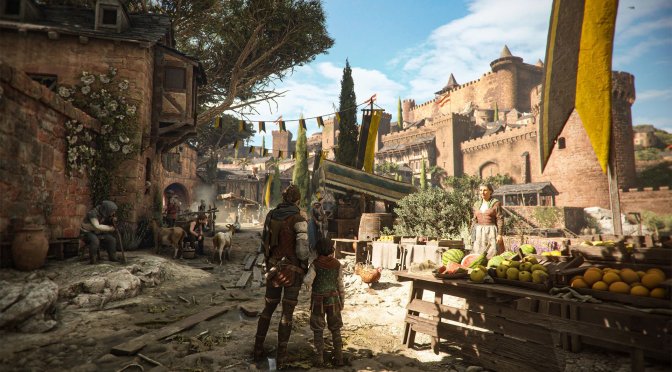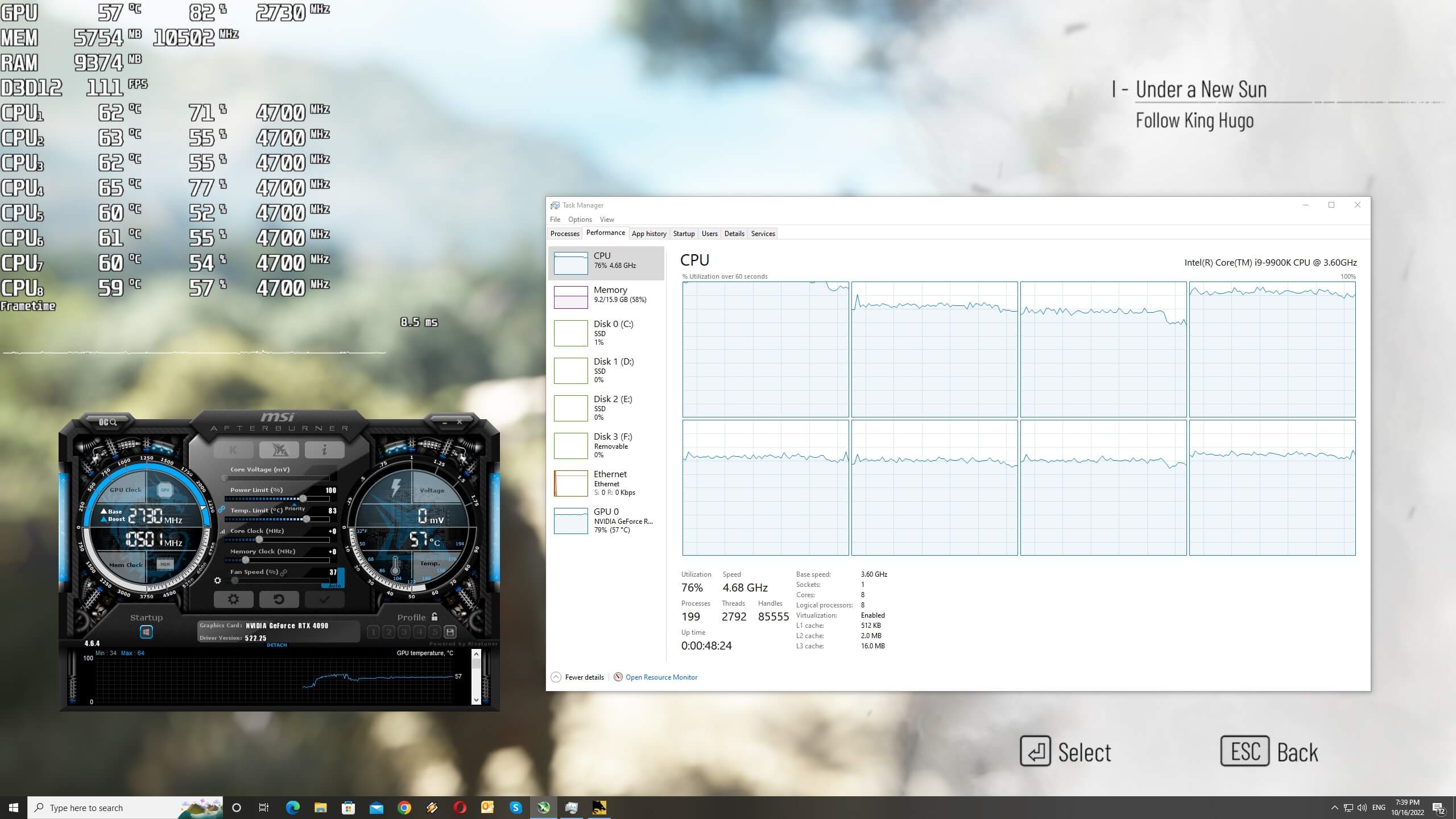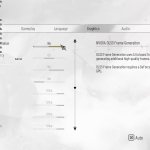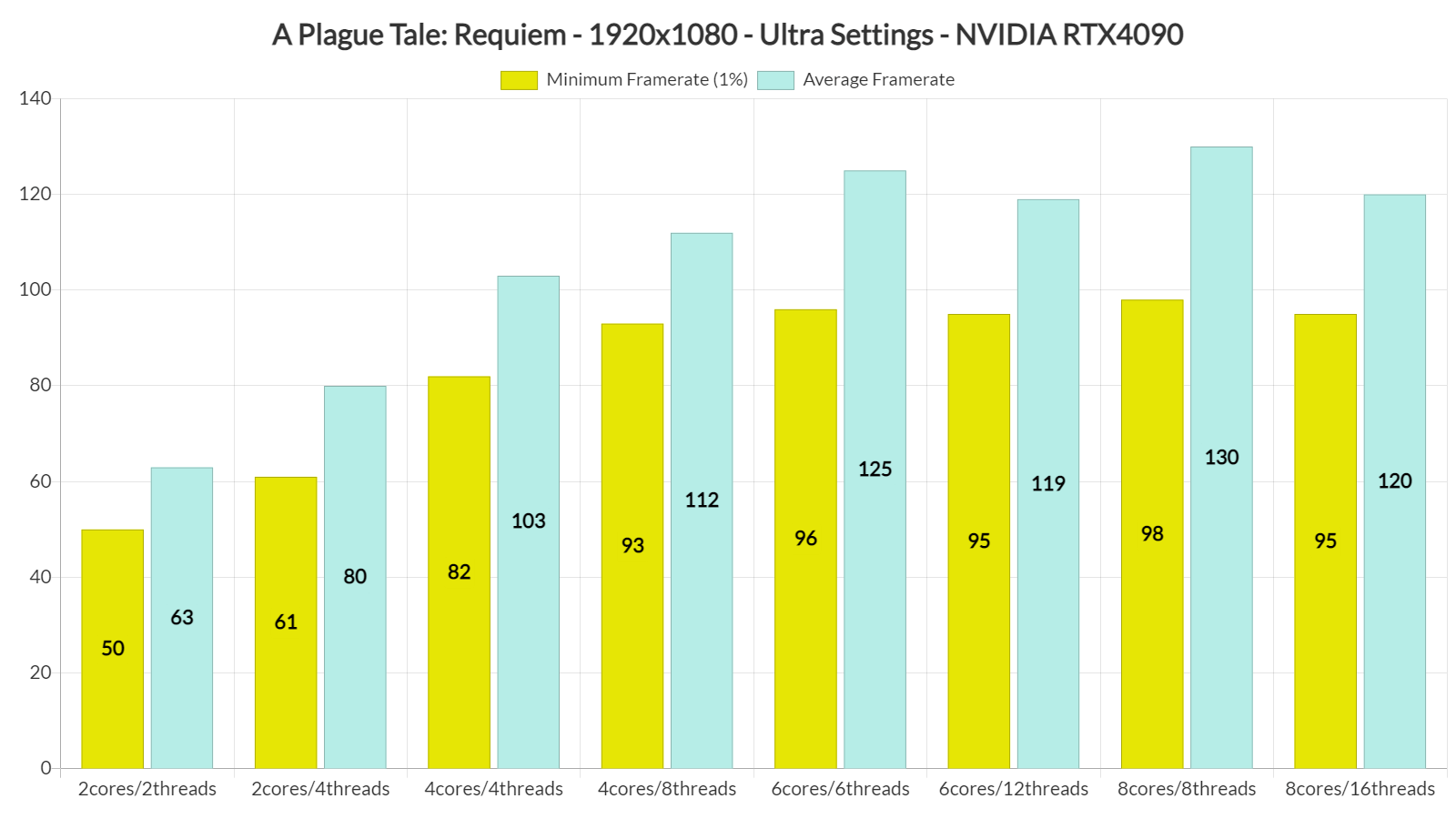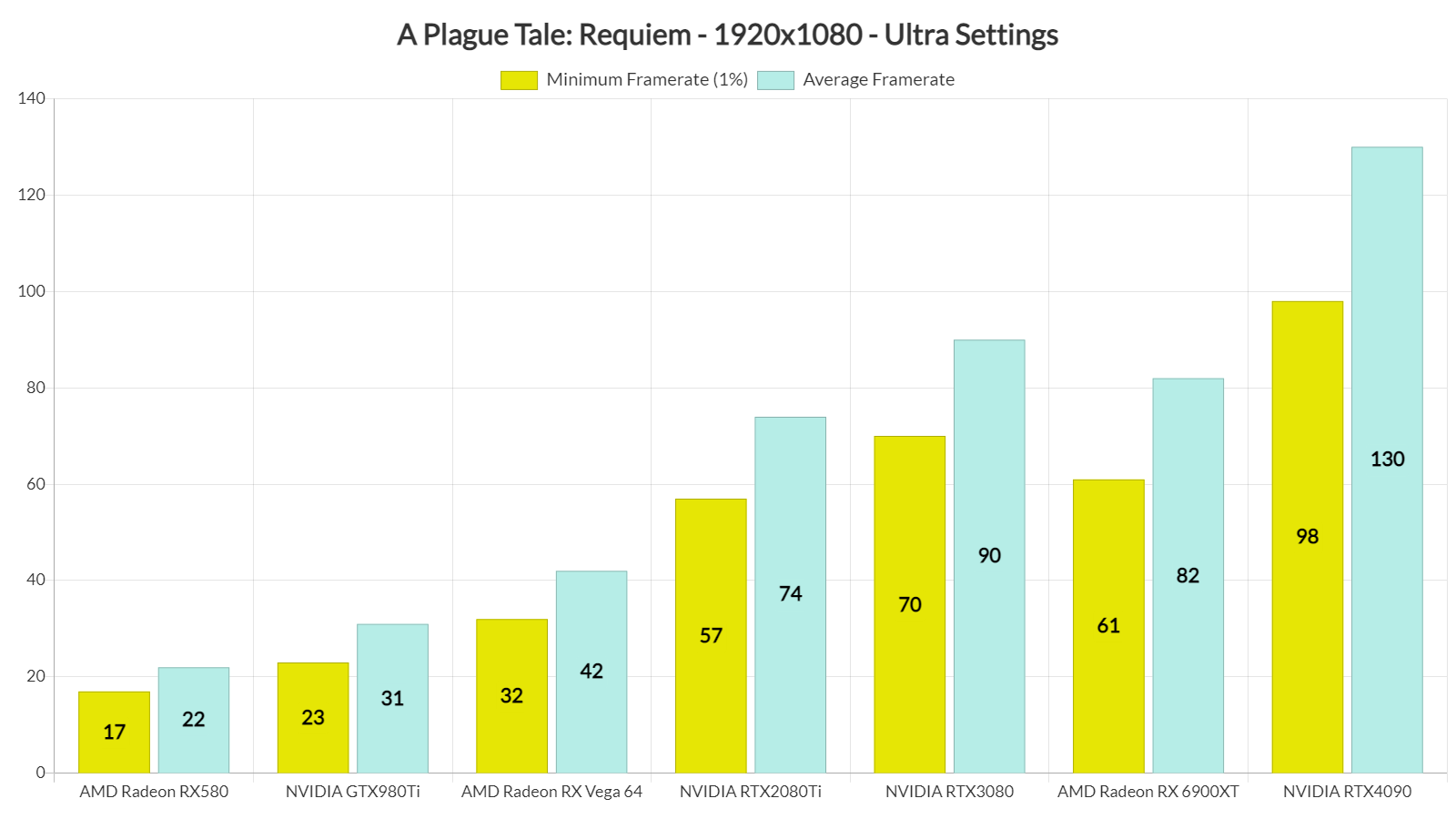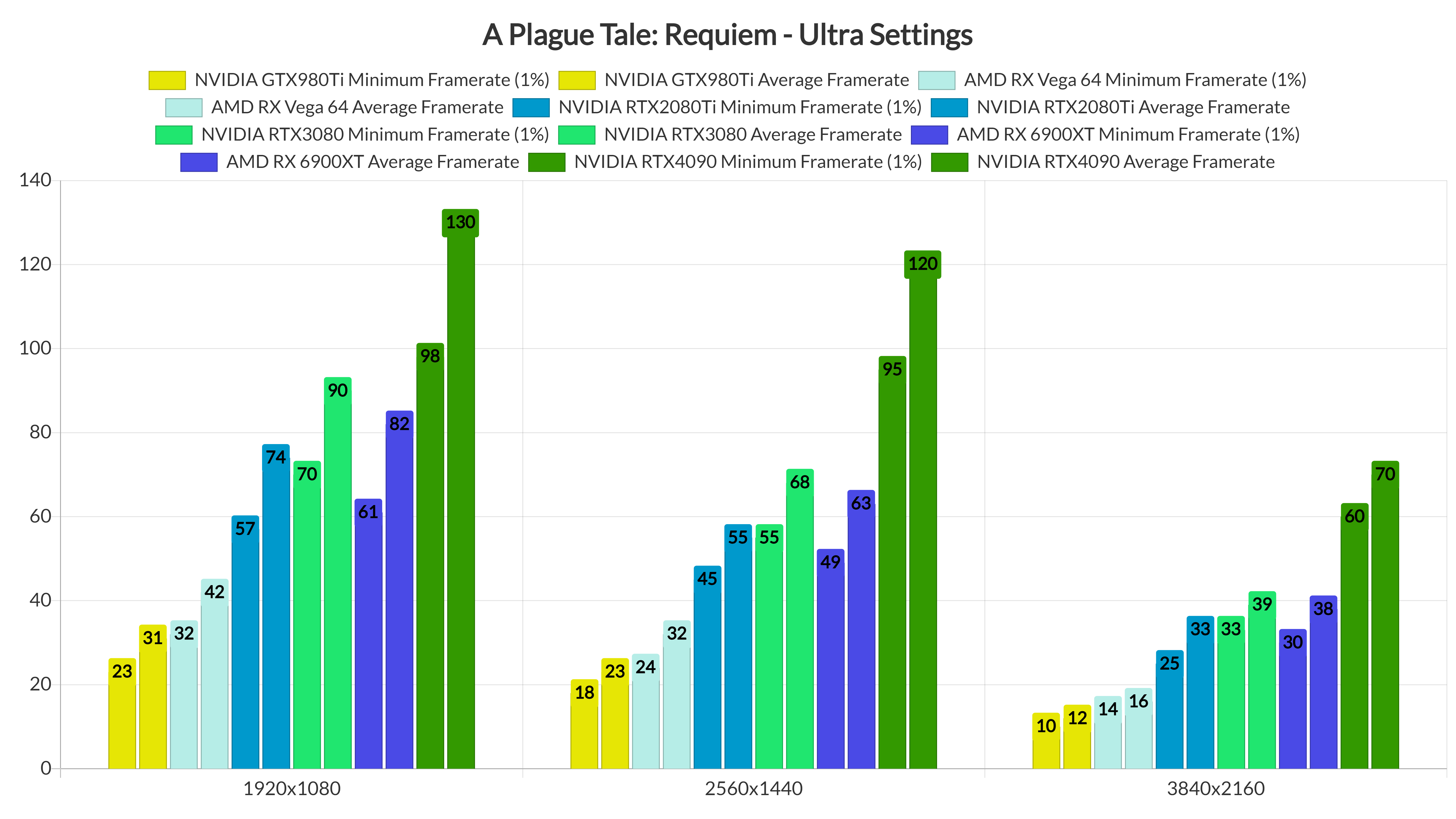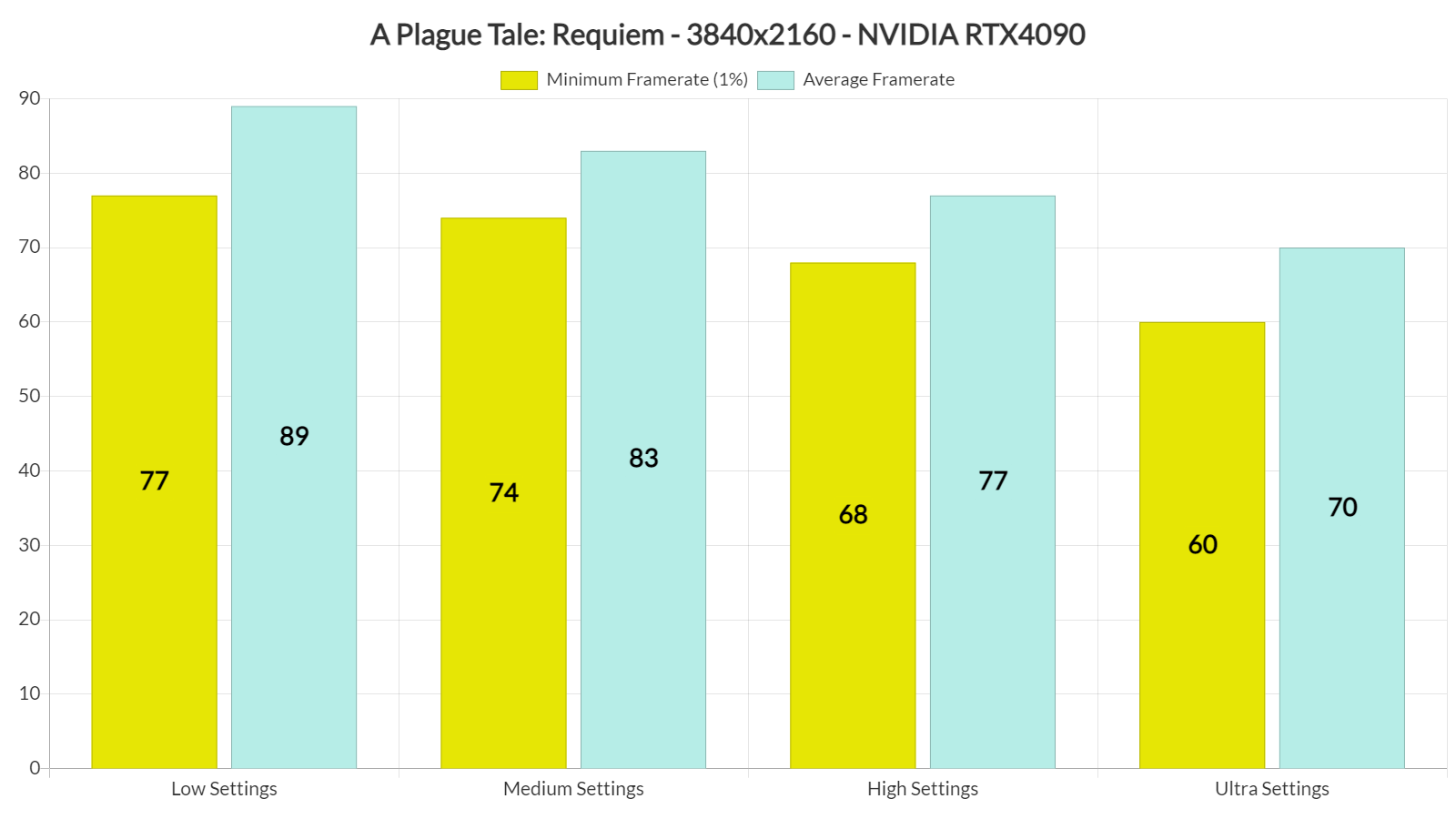A Plague Tale: Requiem is a narrative-driven, action-adventure survival horror stealth game that will release tomorrow. Powered by Asobo’s in-house engine, it’s time now to benchmark it and see how it performs on the PC platform.
For this PC Performance Analysis, we used an Intel i9 9900K with 16GB of DDR4 at 3800Mhz, AMD’s Radeon RX580, RX Vega 64, RX 6900XT, NVIDIA’s GTX980Ti, RTX 2080Ti, RTX 3080 and RTX 4090. We also used Windows 10 64-bit, the GeForce 522.25 and the Radeon Software Adrenalin 2020 Edition 22.10.1 drivers.
Asobo has added a few graphics settings to tweak. PC gamers can adjust the quality of Draw Distance, Shadow Maps, Textures, Volumetric Lights, Ambient Occlusion, Depth of Field, Contact Shadows, Light Shafts and Screen-Space Reflections. Although NVIDIA has stated that the game will support Ray Tracing, we didn’t find any RT setting in the review code. However, the game does support DLSS 2 and DLSS 3.
A Plague Tale: Requiem does not feature any built-in benchmark tool. Thus, and per NVIDIA’s recommendations, we’ve benchmarked its opening area.
In order to find out how the game scales on multiple CPU threads, we simulated a dual-core, a quad-core and a hexa-core CPU. And, to be honest, I was genuinely surprised by the performance of our simulated dual-core system. Without Hyper-Threading, our simulated dual-core was able to push a minimum of 50fps at 1080p/Ultra. Not only that, but the game did not suffer from extreme stuttering issues, and was perfectly playable. With Hyper-Threading, we were able to get a constant 60fps on that system. We should also note that Hyper-Threading had a negative performance hit on both our octa-core and simulated hexa-core systems, so we suggest disabling it on PC systems that have more than six physical CPU cores.
A Plague Tale: Requiem can be easily described as a GPU-bound title. At 1080p/Ultra, the only GPUs that were able to provide a constant 60fps experience were the RTX 3080, RTX 4090 and AMD RX 6900XT. The NVIDIA RTX2080Ti was also able to provide a smooth experience, though we did notice some drops to 57fps.
At 1440p/Ultra, the only GPU that was able to offer a constant 60fps experience was the RTX 4090. The RTX 3080 offered smooth framerates overall, though there were some drops to 55fps. Thus, later – and perhaps more demanding – scenes may drop the framerate even more. It’s also worth noting that AMD’s RX 6900XT did not perform that well in this game. AMD’s RDNA 2 GPU was constantly behind the RTX3080, at both low and high resolutions.
Graphics-wise, A Plague Tale: Requiem looks absolutely amazing. This is a current-gen only game and it shows. All main characters are highly detailed, though their animations could have been a bit smoother. The game has bendable bushes and grass, and its lighting effects look incredible. It also packs a lot of high-resolution textures. What also impressed me was its draw distance as I could hardly notice the LOD transitions of objects. So yeah, while the game has high GPU requirements, its visuals at least justify them.
For those wondering, the in-game graphics settings cannot improve the game’s performance by a lot. By lowering our settings to Low, we were able to increase our performance by only 28%. Even at Low Settings, though, the game can still look great.
All in all, A Plague Tale: Requiem is one of the most demanding PC games we’ve seen to date. Although it does not require a high-end CPU, it does require a powerful GPU. RTX owners can thankfully improve performance by using DLSS 2 Quality (and we highly recommend it, even at 1440p). Unfortunately for AMD and Intel owners, though, the game does not support FSR 2.0 or XeSS.
As said, the game does look incredible so it at least justifies its high GPU requirements. Nevertheless, we’d like to see a bit better scalability on older GPUs, especially when using the Low settings. We also experienced some minor stutters here and there (don’t worry, they are nowhere close to what you’ve seen in other games).
Lastly, you can find below a video, showcasing the game running in 8K DLSS 2 Quality on the RTX 4090!

John is the founder and Editor in Chief at DSOGaming. He is a PC gaming fan and highly supports the modding and indie communities. Before creating DSOGaming, John worked on numerous gaming websites. While he is a die-hard PC gamer, his gaming roots can be found on consoles. John loved – and still does – the 16-bit consoles, and considers SNES to be one of the best consoles. Still, the PC platform won him over consoles. That was mainly due to 3DFX and its iconic dedicated 3D accelerator graphics card, Voodoo 2. John has also written a higher degree thesis on the “The Evolution of PC graphics cards.”
Contact: Email

